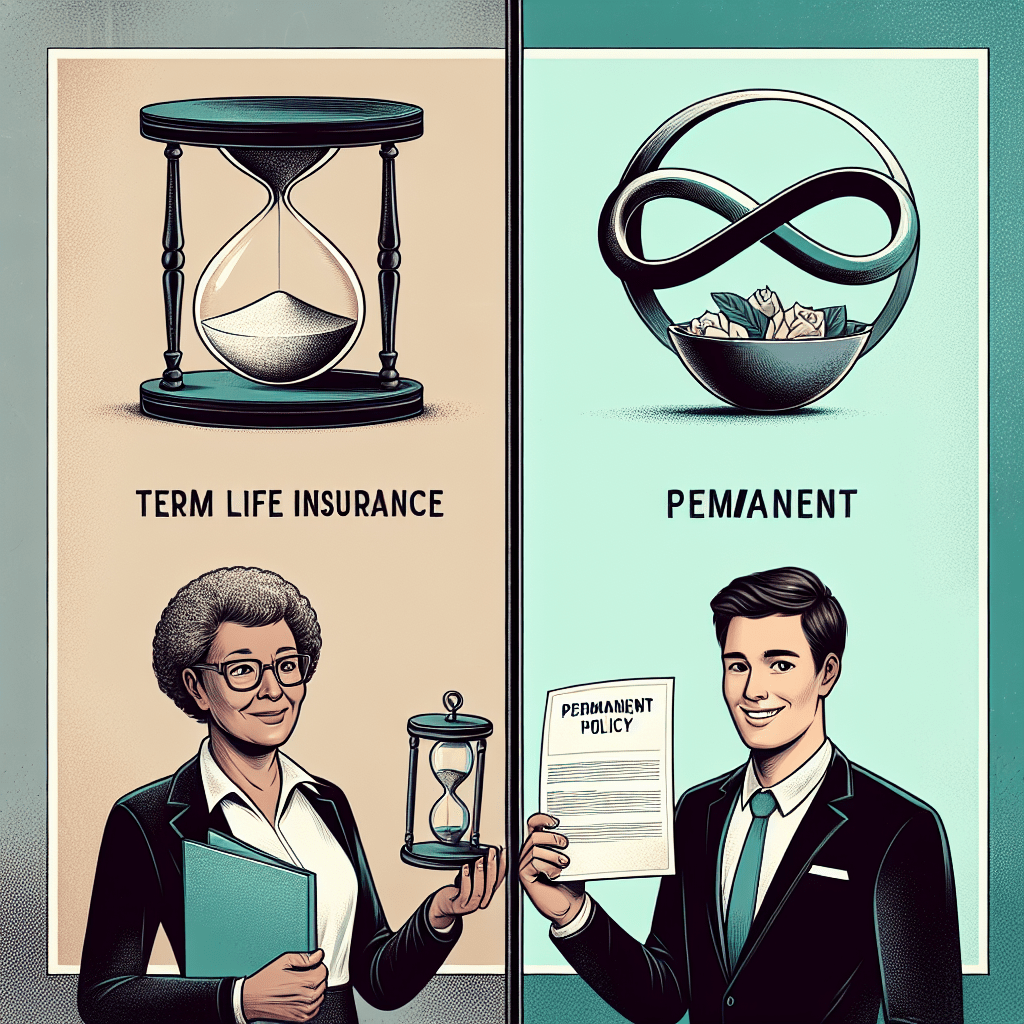Life insurance is a crucial financial planning tool that provides protection for your loved ones in the event of your death. When exploring life insurance options, two primary types come to the forefront: term life insurance and permanent life insurance. Each type has its own unique features and benefits, making it essential to understand the differences between them to make an informed decision. Let’s delve into the distinctions between term and permanent life insurance.
Term Life Insurance
Term life insurance is a type of life insurance that provides coverage for a specified period, typically ranging from 10 to 30 years. This type of insurance offers a death benefit to your beneficiaries if you pass away during the term of the policy. Term life insurance is usually more affordable than permanent life insurance, making it an attractive option for those on a budget.
One of the key features of term life insurance is its flexibility. You can choose the length of the term based on your needs, such as until your children are grown or until you retire. Term life insurance is ideal for providing financial protection during specific periods of your life when your loved ones may be dependent on your income.
Permanent Life Insurance
Permanent life insurance, on the other hand, provides coverage for your entire life. It includes a death benefit as well as a cash value component that grows over time. Permanent life insurance comes in various forms, including whole life, universal life, and variable life insurance.
One of the primary advantages of permanent life insurance is that it offers lifelong protection and can serve as an additional source of income during retirement. The cash value component allows you to build savings over time, which you can access through policy loans or withdrawals. Permanent life insurance provides a sense of security and stability, knowing that your beneficiaries will receive a death benefit regardless of when you pass away.
Differences Between Term and Permanent Life Insurance
1. Coverage Period: The most significant difference between term and permanent life insurance is the coverage period. Term life insurance provides coverage for a specific term, while permanent life insurance lasts for your entire life.
2. Cost: Term life insurance is typically more affordable than permanent life insurance, making it a more budget-friendly option for many individuals. Permanent life insurance premiums are higher due to the lifelong coverage and cash value component.
3. Cash Value: Permanent life insurance has a cash value component that accumulates over time, providing a savings element in addition to the death benefit. Term life insurance does not have a cash value component.
4. Flexibility: Term life insurance offers flexibility in choosing the length of the term based on your needs. Permanent life insurance provides lifelong coverage and the ability to access the cash value component for financial needs.
Conclusion
When deciding between term and permanent life insurance, it’s essential to consider your financial goals, budget, and long-term needs. Term life insurance is ideal for providing temporary coverage at an affordable cost, while permanent life insurance offers lifelong protection and a cash value component for added financial security. Assessing your priorities and working with a trusted insurance advisor can help you choose the right type of life insurance for your individual situation.
FAQs
Q: What happens if I outlive my term life insurance policy?
A: If you outlive your term life insurance policy, the coverage will expire, and you will not receive a death benefit. You may have the option to renew the policy or convert it to a permanent life insurance policy, depending on the terms of your policy.
Q: Can I borrow against the cash value of my permanent life insurance policy?
A: Yes, you can borrow against the cash value of your permanent life insurance policy through policy loans. Keep in mind that borrowed funds accrue interest, which will reduce the death benefit if not repaid.
TIP:
Before purchasing life insurance, carefully assess your financial needs, goals, and budget to determine the type of coverage that best suits your circumstances. Consider seeking advice from a financial advisor or insurance professional to navigate the nuances of term and permanent life insurance options.
#Understanding #Differences #Term #Permanent #Life #Insurance
